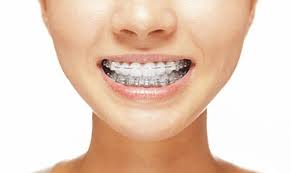Braces & Adults
The American Association of Orthodontists recommends age 7 for a child’s initial orthodontic evaluation, but many adults have been able to benefit from treatment as well. Because of the fact that many adults are unwilling to leave the orthodontist’s office 교정 전문 치과 due to social or professional concerns, full-time braces are the only option in certain cases.
In a survey of 2,000 adults 35 years of age or older, results showed that those who had been wearing braces for at least 20 years made significantly higher self-reported payments for orthodontic work. The survey was presented at the annual meeting of the Association for the Advancement of Better Opinion About Health.
A follow-up survey asked those who had braces removed what their number one recommend to their dentist. Over 50% responded that their current dentist was their initial choice. Another 16% volunteered that their current dentist was their second choice, while only 6% listed their dentist as their first choice.
This is hardly an exception. Problems that can be corrected or made less complicated by wearing dental braces can have a significant financial impact on your life.
tended to be much better known in the past than they are today. Orthodontics has been covered by the news media and is frequently discussed in the popular media.
But studies like this one will likely show that the problem of improper bite and malocclusion (misaligned teeth) is much more common among adults than it is among children. We may be able to eliminate this myth, but we will never know unless you speak with a dentist.
Even if the perception that braces are not really braces is changed after the initial shock, many people are reluctant to go forward with treatment because of the stigma attached to traditional braces.
Braces are not permanent, and often must be removed for food consumption, brushing, flossing and other daily oral hygiene procedures.
Partial removal of braces must be completed prior to cleaning and whitening your teeth.
Once braces are removed, the teeth may continue to mal-occlusions and regain previous positions.
One of the most important things people should know about braces is that they do not straighten evenly.
If your teeth are not perfectly straight, you could experience uneven wear, and possibly pain or discomfort while eating certain foods.
If your bite is off and the positioning of your teeth is not critical, then your dentist may be able to use a device that straightens your teeth without using braces.
Depending on the amount of orthodontic work needed, braces can cost up to $9000, while Invisalign can cost up to $400-$1000.
Patients must have a now comfortable with the dentist before treatment begins.
There is a great deal of debate on the subject of braces vs. Invisalign, but when basics are compared, the draw is clear.
Invisalign braces are clear plastic trays that are the exact fit for your teeth.
Braces are metal brackets that are cemented to your teeth. Some braces are allowed to be switched out at regular intervals (so that they are one size fits all), while Invisalign braces are permanently attached to the teeth.
Braces are made of stainless steel, titanium, stainless steel, and plastic.
Invisalign braces are clear plastic removable dental appliances.
The real question is not whether or not Invisalign braces work, but rather, how much do you pay for Invisalign braces?
The average cost of Invisalignmaintenance is $5,000-$7,000. Individual dental records can be used to determine how much you will need to pay.
There is a chance that you will be able to find a dentist that will accept payment in full, or a payment plan.
Most studies show that there is no real risk associated with the use of Invisalign braces. The only exception is a patient who smokes.
Once a patient has been treated with Invisalign, most of their orthodontic problems will be solved.
If you have dental records, and you areacesensitive, or allergic to nickel, gold, titanium, and fluorides, your dentist can tell you if they do provide coverage for you.
A final thought to consider, is that braces, and sometimes even Invisalign aligners, are not covered by insurance.
Depending on your employer, can make what used to be a non-emergency into a matter that is now considered an essential dental care procedure.
Thanks for reading.
